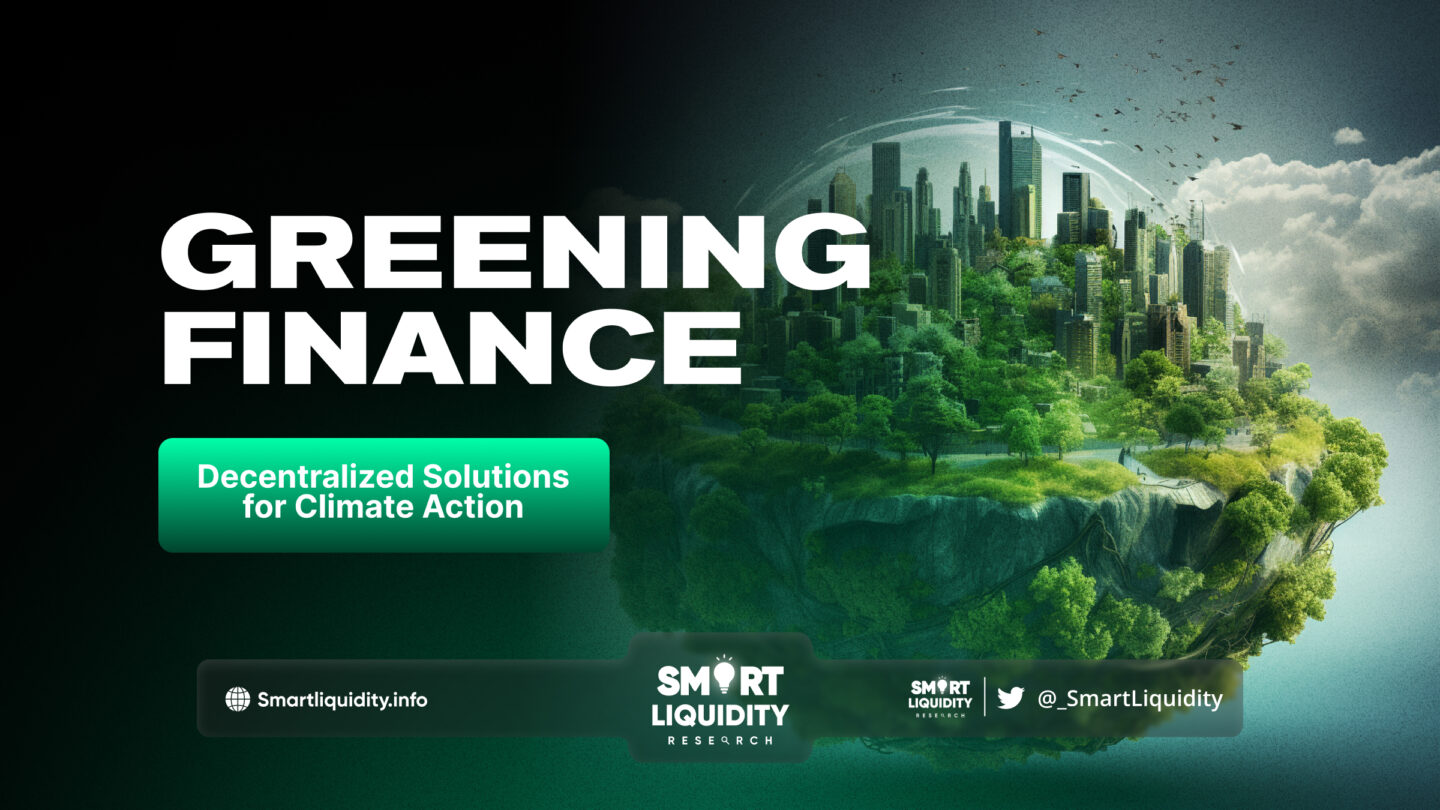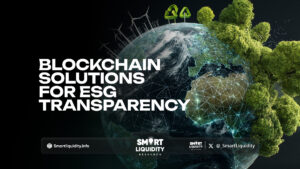Decentralized Finance’s Role in Climate Mitigation: A Pathway to a Greener Future


In a world increasingly alarmed by the pressing threat of climate change, a novel protagonist has emerged on the scene – Decentralized Finance (DeFi). Combining the power of blockchain technology with financial innovation, DeFi presents a groundbreaking pathway toward a greener and more sustainable future. Let’s delve into how DeFi is shaping up to be a pivotal player in the fight against climate change.


Carbon-Neutral Crypto Mining: Shaping an Eco-Friendly Blockchain
The energy-intensive nature of crypto mining has long been a concern for its environmental impact. However, the blockchain ecosystem is witnessing a transformative shift toward carbon-neutral mining, where sustainability meets the power of decentralized networks. This paradigm shift not only addresses ecological concerns but also redefines the future of blockchain technology.
Traditional Proof of Work (PoW) consensus mechanisms have been notorious for their massive energy consumption. Yet, innovative projects are emerging to challenge this status quo. Leveraging renewable energy sources like solar, wind, and hydroelectric power, carbon-neutral crypto mining ensures that the energy used to validate transactions and secure the blockchain is offset by clean energy production. This synergy minimizes the carbon footprint, making the entire process environmentally viable. Projects like SolarCoin are paving the way, offering incentives in the form of tokens for solar energy generation, effectively merging green energy production with blockchain validation. As more miners and projects join the carbon-neutral movement, the blockchain landscape is transitioning from an energy-hungry ecosystem to a sustainability-driven powerhouse, setting a promising trajectory for a greener digital future.
Tokenized Carbon Credits: Trading Emissions on the Blockchain
The urgency to curb carbon emissions has sparked innovative solutions within the realm of decentralized finance, giving birth to tokenized carbon credits. By harnessing the transparency and efficiency of blockchain technology, these digital assets are redefining the way carbon offset markets function. Tokenized carbon credits offer a streamlined approach to emissions reduction, creating a win-win scenario for both environmental conservation and financial innovation.
Traditionally, carbon credits have faced challenges such as opacity, lack of traceability, and slow transaction processes. The blockchain disrupts this by enabling the fractional ownership of carbon credits through tokens. This not only enhances transparency but also simplifies the trading of carbon credits, making it accessible to a wider range of participants. Platforms like ClimateCoin are utilizing this concept to tokenize real-world carbon credits, allowing individuals and businesses to invest in verified emissions reduction projects and trade these tokens seamlessly. As a result, tokenized carbon credits are revolutionizing the carbon offset landscape, providing a dynamic and efficient market that encourages sustainable practices while empowering individuals to actively participate in the fight against climate change.
Green Bonds 2.0: Smart Financing for Eco-Friendly Projects
The evolution of green bonds has ushered in a new era of sustainable finance, often referred to as Green Bonds 2.0. This innovative approach to financing eco-friendly projects harnesses the power of blockchain technology to bring transparency, efficiency, and accountability to the world of sustainable investments. Green Bonds 2.0 not only bolsters environmental conservation but also empowers investors to actively engage in projects that drive positive change.
Unlike traditional bonds, where the use of funds can sometimes be unclear, Green Bonds 2.0 employs blockchain-based smart contracts to ensure that funds are allocated exclusively to pre-defined eco-friendly initiatives. This level of transparency provides investors with a clear understanding of where their money is going and how it’s contributing to sustainability goals. Projects like Genesis 2.0 are taking this a step further by tokenizing these bonds. By using blockchain technology, Genesis 2.0 can make the process of issuing and trading green bonds more efficient and secure. It can also help to prevent greenwashing by making it easier to track the use of proceeds from green bonds.
Solar-Powered Staking: Merging Energy Production and Blockchain
The convergence of renewable energy and blockchain technology has birthed a revolutionary concept – solar-powered staking. This ingenious synergy marries the energy production of solar panels with the cryptographic validation of blockchain networks, offering a sustainable solution to the energy-intensive nature of cryptocurrency mining. Solar-powered staking not only reduces the environmental impact of blockchain operations but also opens a gateway to a greener, decentralized future.
Traditional blockchain consensus mechanisms like Proof of Work (PoW) require immense computational power, consuming significant energy resources. Solar-powered staking, on the other hand, embraces the use of renewable energy sources like solar panels to power the energy-hungry computations needed to validate transactions and secure the network. Projects like SunContract are pioneering this approach, allowing users to stake their cryptocurrency while contributing surplus solar energy to the grid. This dual-purpose system not only provides a steady income stream for stakers but also supports a cleaner and more sustainable energy grid. As solar-powered staking gains traction, it illustrates the potential of blockchain technology to drive eco-friendly innovation and reshape the energy landscape in a way that benefits both individuals and the planet.
Conclusion: Cultivating a Sustainable Future with DeFi
In the unfolding narrative of our ecological responsibility, the evolution of DeFi stands as a beacon of hope, illuminating the potential for blockchain technology to drive tangible change. From tokenized carbon credits to solar-powered staking and beyond, DeFi is charting a course toward a more sustainable world where financial prosperity and environmental stewardship intertwine seamlessly. As this novel chapter continues to unfold, we find ourselves at the nexus of innovation and conscience, with DeFi’s expanding horizons offering not just financial rewards, but also a chance to cultivate a future that thrives in balance with the planet we cherish.




